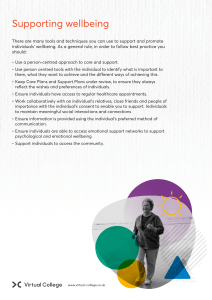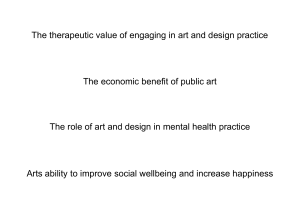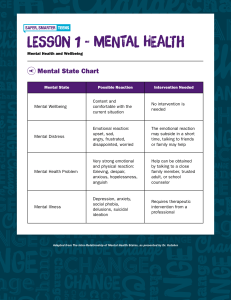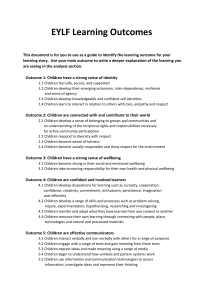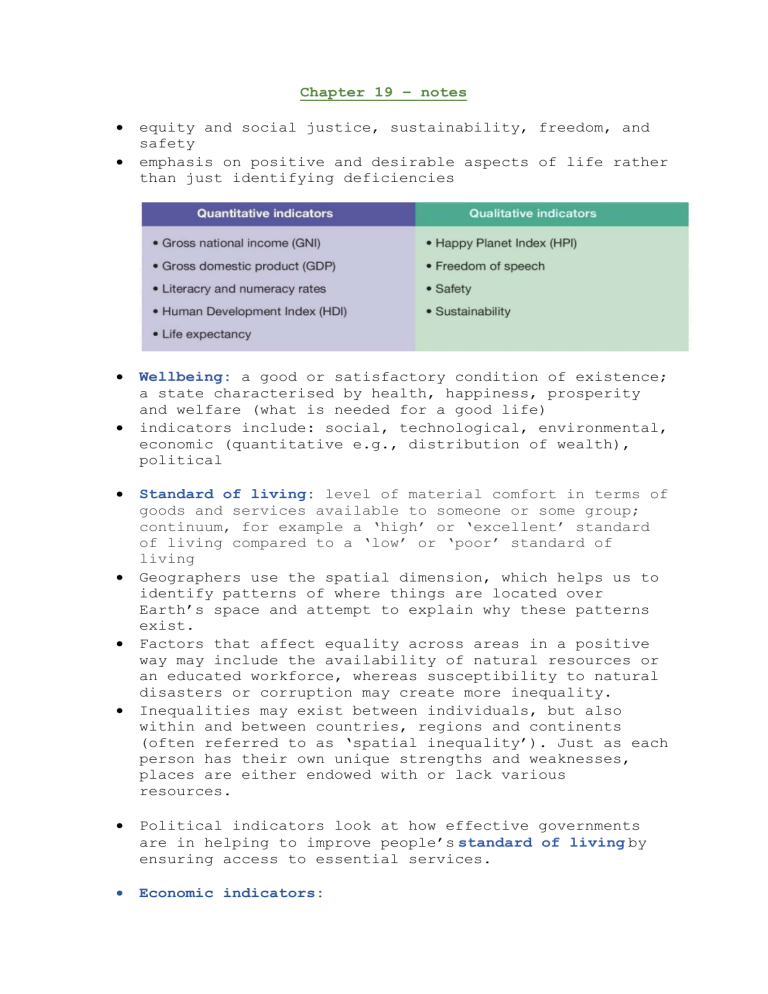
Chapter 19 – notes equity and social justice, sustainability, freedom, and safety emphasis on positive and desirable aspects of life rather than just identifying deficiencies Wellbeing: a good or satisfactory condition of existence; a state characterised by health, happiness, prosperity and welfare (what is needed for a good life) indicators include: social, technological, environmental, economic (quantitative e.g., distribution of wealth), political Standard of living: level of material comfort in terms of goods and services available to someone or some group; continuum, for example a ‘high’ or ‘excellent’ standard of living compared to a ‘low’ or ‘poor’ standard of living Geographers use the spatial dimension, which helps us to identify patterns of where things are located over Earth’s space and attempt to explain why these patterns exist. Factors that affect equality across areas in a positive way may include the availability of natural resources or an educated workforce, whereas susceptibility to natural disasters or corruption may create more inequality. Inequalities may exist between individuals, but also within and between countries, regions and continents (often referred to as ‘spatial inequality’). Just as each person has their own unique strengths and weaknesses, places are either endowed with or lack various resources. Political indicators look at how effective governments are in helping to improve people’s standard of living by ensuring access to essential services. Economic indicators: o gross domestic product (GDP): measures economic activity in country o measurement of the value of all goods and services bought and sold within a country’s borders o profits made by business may not stay in the country where it was made, but the headquarters (e.g., Nike sold in Australia but headquarters In USA)) o A GDP-led development model focuses solely on boundless economic growth on a planet with limited resources — and this is not a balanced equation. o gross national income (GNI): economic activity of residents and businesses of a country o e.g., if golfer Jason Day wins a tournament in Scotland, the prize money would be counted towards Scotland’s GDP (it was produced in that country); however, as he is an Australian citizen, it would count as part of Australia’s GNI o these measures make no distinction between transactions that add to wellbeing and those that detract from it (do not recognise environmental, social and humanitarian issues such as pollution and stress levels) the human development index (HDI) is a combination of indicators which give insights on a country’s wellbeing Each of the four component measures — life expectancy, experienced wellbeing, inequality of outcomes and ecological footprint — is given a traffic-light score based on thresholds for good (green), middling (amber) and bad (red) performance results. These scores are combined into an expanded six-colour traffic light for the overall HPI score. To achieve bright green (the best of the six colours), a country would have to perform well on all three individual components. ecological footprint the amount of productive land needed on average by each person in a selected area for food, water, transport, housing and waste management The imaginary Brandt Line divided the rich and poor countries, roughly following the line of the equator The North included the United States, Canada, Europe, the USSR, Australia, and Japan. The South represented the rest of Asia, Central and South America, and all of Africa Terms first world and third world, over time, became more commonly used to describe the category of poorer countries that generally had lower standards of living Poverty, although involving many factors, is often measured using solely economic indicators Stewardship (an ethic that embodies the responsible planning and management of resources) benefits the environment and aids wellbeing by ensuring we better manage the benefits we receive from nature. Sustainability is measured by the SSI, which maps social, political, economic and environmental factors. Malnutrition or hunger affect about 1 in 8 people across the world. Food and water insecurity can also lead to other illnesses and diseases, such as cholera or typhoid. Rates of obesity are increasing due to rising calorie intake and decreased physical activity. BMI is a simple index of weight-for-height that is commonly used to classify persons as overweight or obese (weight/height ≥ 25 as overweight and ≥ 30 as obese) The primary cause of overweight/obesity is an imbalance between calories consumed and calories expended (energy burned) Malaria is a blood disease spread by mosquitoes; risk factors include poverty (especially when it stops prevention strategies). Stopping mosquitoes from breeding or biting people are the most effective prevention strategies, but the most effective insecticide (DDT) is harmful to people, and many people at risk cannot afford prevention. Tuberculosis (TB) is caused by bacteria. It is a preventable and treatable disease, but over 10 million people a year become ill from it. Chapter 20 - notes Factors influencing variations in wellbeing between countries are multifaceted, including historical legacies, colonialism, natural resource endowments, political stability, infrastructure, and access to global markets. Life expectancy is the length of time we can expect to live from birth. The average global figure has been steadily rising (due to birth and death rates) Wellbeing disparities within a country can be significant due to regional, cultural, and economic factors. Internal reasons for variation: good governance, effective public policies, and low levels of corruption can contribute to equitable wellbeing. These factors ensure that resources are allocated efficiently and fairly. o Population growth: access to better education, healthcare and family planning leads to improved wellbeing. o Geographical location: coastlines improve transport and trade; infectious diseases thrive in tropical climates. o Political instability: reduces access to food/healthcare/personal safety; can divert funds from essential services and destroy infrastructure; some persecuted people may need to flee for their safety. o Environmental degradation: reduces access to food and arable land; increases erosion, pollution, salinity. o Resources: determine the amount of food available; provide economic benefits from export. Education, healthcare, income inequality and poverty greatly affect internal reasons for variation in wellbeing External factors: outside the control of a country. o Colonisation: drained resources (natural and human); created oppression and disadvantage. o Trade: covering a shortfall in production of essentials (such as food) leads to national debt; some products are more lucrative than others, leading to inequalities. o Transnational corporations: use cheap labour in developing countries; most profits go to developed countries. o Aid: can help to redress imbalance, but is vulnerable to corruption and may be ineffectual in the long term without building local expertise and training. Middle class – variation in wellbeing: o Significant variations in wellbeing. These variations are primarily due to factors such as education, employment, and social status. o Factors affecting wellbeing are usually related to growth/decline such as income, consumer culture, employment rates and government services. The sizes of families and populations impact wellbeing and have a significant impact on age distribution, which affects key wellbeing indicators Kenya has a large, young population due to high birth rates and low life expectancy, which places stress on the country’s environmental resources, arable land, health and education services, and economy. Japan has an ageing population because of low fertility rates and high life expectancy, which leads to increased healthcare costs, lower income tax revenue and fewer workers. Factors affecting levels of wellbeing for women include complications of pregnancy and childbirth. Maternal mortality rates are connected to poverty, healthcare and education. In some cultures, male children are more prized than female children, creating gender imbalance and a greater likelihood of women having multiple pregnancies, which increases their risk of complications. Chapter 21 – notes urban concentration within Australia affects access to services, transportation, and employment opportunities. Our current population growth is due to immigration rather than natural increase Indigenous Australians make up a significant portion of the population. Their wellbeing indicators, including life expectancy and access to education and healthcare, are often lower than the national average. This reflects historical and ongoing disparities stemming from colonization and dispossession. Australia also faces demographic challenges, including an ageing population. With a growing number of elderly citizens, there is increasing demand for healthcare, aged care services, and considerations regarding the workforce and pensions.
